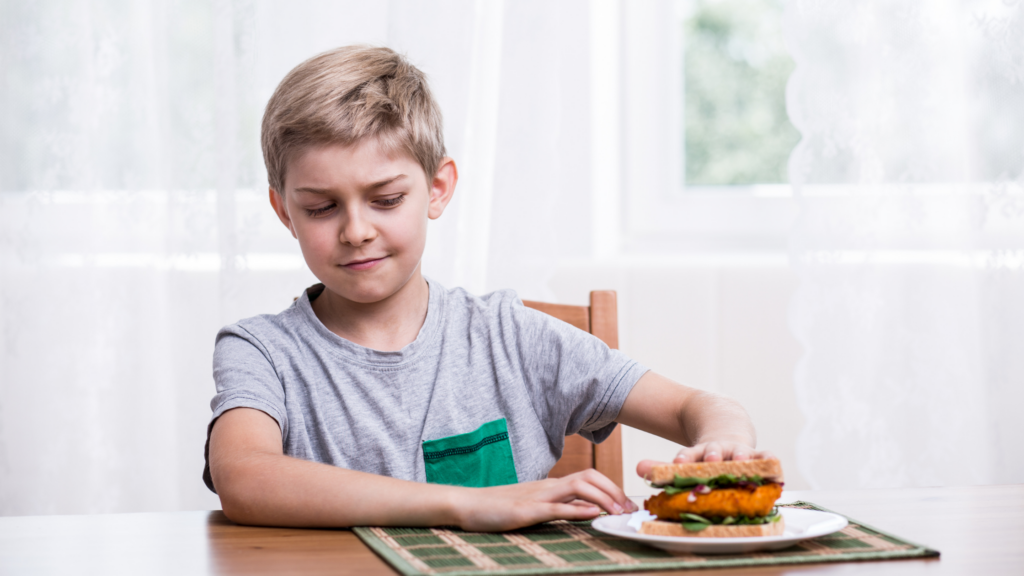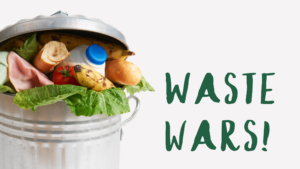In our latest blog, Sarah Dwyer takes a closer look at fussy eating and what parents can do to encourage their kids to try a wider variety of healthy foods and maybe even have some fun doing it!
As parents we’ve all been there. Prepared a meal full of vegies and protein (or an alternative) that looks semi-Masterchef like – stood back and given ourselves a virtual pat on the back for being a stellar mum or dad. All to be faced with a chorus of “Ewww, what’s that? It looks disgusting!” or “Yuk, I hate (insert prepared delicious healthy meal)”. Unfortunately, these are regular phrases around my dinner table. So, I decided to do a bit of investigating into the origins of fussy eating – mainly because I was getting sick and tired of throwing half of the kid’s meals in the bin (with the other quarter going to the dog!). And what I uncovered was that it’s actually normal for a child to go through a fussy eating stage.
The prevalence of fussy eating varies, yet a recent study of children aged over 2 and a half estimated it to be around 22% of children that experienced fussy eating[i]. One theory is that kids don’t need as much food – they’re not as hungry because they’re not growing as much. Similarly, a related theory is that while there’s so much brain development going on, the sensory system almost shuts down and because eating is such a sensory experience – involving taste, touch, smell, sound – if their brain is occupied with other tasks rather than the senses, food just doesn’t taste as good or is not as enjoyable as it used to be[ii].
It’s also important to consider kids’ assertiveness: it’s like trying to get your child to put their shoes on – the more you want them to do it, the less likely they’re going to do what you want them to! So, it appears that it’s not unusual for a child who used to eat everything – textured and solid foods – to suddenly become a fussy eater! The research also shows that fussy eating is also associated with family stress and conflict at mealtimes as well as high levels of parent concern and frustration (no surprises here!!)[iii]. Fortunately, the health risks associated with fussy eating are usually low, however fussy eaters do tend to have lower intakes of vitamin E, vitamin C, folate and fibre which may lead to a weak immune response and digestive problems[iv].
We all know that healthy food options that include fruits and vegetables are essential for children’s healthy growth and development, yet most children fail to eat the recommended amounts. A national survey has reported that only 6.3% of Australian children and adolescents are eating the recommended amount of vegetables [v]. Liking and acceptance of vegetables are learnt in early childhood and eating habits track into adulthood, thus efforts to increase vegetable intake need to start as early as possible in life[vi].
So how do we address all of this to make sure the kids are getting the nutrition that they need to grow, that meal-times are calmer for everyone and that less food is wasted (or becomes the dog’s dinner!)?
The experts say that you may need to offer an individual food 10 times or more before kids will choose to eat it. However, around half of parents only persist two or three times before giving up on that food altogether[vii]. Repeated exposure to foods has been shown to be of benefit, but also, we need to support this with other food related activities and discussions to make healthy food choices and eating the norm. Some ideas are getting kids involved in the kitchen (stirring, chopping (with safe knives!) or serving), meal planning, shopping together and planting herbs and veggies in the garden. The other idea I came across the other day was books and games. After a trip to our local library my 5-year-old came home with a funny story book about stinky brussel sprouts. And it got me thinking – what other books and games are out there that focus on healthy food options for kids that encourage eating and trying new things? And it seems there’s a heap. We all know of ‘The Hungry Caterpillar’ by Eric Carle but in our house there’s a new couple of favs including ‘The Boy Who Loved Broccoli’ by Sarah A. Creighton and ‘How Did That Get In My Lunchbox? The Story of Food’ by Chris Butterworth. More great titles can be found here.
There are also some great games like bingo and memory from the Eat a Rainbow Program (developed by Country Health SA and the Department of Education and Childhood Development Early Childhood) which encourage greater familiarity with a range of fruits and vegetables.
So, if mealtimes are becoming less than fun and you’re looking for new ways to encourage and familiarise the kids to try a wider variety of foods that you’re cooking, why not look for a few books focused on vegies or healthy eating or play the occasional game of eat a rainbow bingo? Have fun! ?
[i] Wolstenholme, H., Kelly, C., Hennessy, M. et al. (2020). Childhood fussy/picky eating behaviours: a systematic review and synthesis of qualitative studies. Int J Behav Nutr Phys Act 17, 2. https://doi.org/10.1186/s12966-019-0899-x
[ii]Tang, C. (2020). Dealing with fussy eating in children. https://newsroom.unsw.edu.au/news/health/dealing-fussy-eating-children. Accessed online 14/7/21.
[iii] Cole NC, An R, Lee SY, Donovan SM. (2017). Correlates of picky eating and food neophobia in young children: a systematic review and meta-analysis. Nutr Rev. 2017;75(7):516–32.
[iv] Dovey TM, Staples PA, Gibson EL, Halford JCG. (2008). Food neophobia and “picky/fussy” eating in children: a review. Appetite ;50(2–3):181–93.
[v] Australian Bureau of Statistics. (20180. 4364.0.55.001 – National Health Survey: First Results, 2017-18. 2018 [18.12.2019]; Available from: https://www.abs.gov.au/ausstats/abs@.nsf/Lookup/by%20Subject/4364.0.55.001~201718~Main%20Features~Children’s%20risk%20factors~120
[vi] Zarnowiecki, D. and Golley. R. (2019) Inclusion of best practice into VegKIT research activities – Mapping activity, Flinders University.
[vii] Better Health Channel. Toddlers and fussy eating. https://www.betterhealth.vic.gov.au/health/HealthyLiving/toddlers-and-fussy-eating. Accessed online 16/7/21




